视频 | 张超级 - 关于绘画的三个基本问题

痕迹系列 超脱尘根170x390cm 亚麻布丙烯
纪录片《张超级:关于绘画的三个基本问题》
监制:吴江宁 导演:吉日泰 雷雨婷 / 制片人:吴江宁 陈文利 / 统筹:康敏 / 摄影:裴彦林 吴振坤 / 剪辑:王宥鑫 调色:魏澎 / 出品:北京君牧文化发展有限公司
张超级艺术纪录短片,由君牧文化文化发展有限公司出品。第一人称纪实讲述艺术家坚守本心的拓荒之路,真实还原创作情景,深度挖掘创作理念。素履之往,独行其愿,随心随性却不随波逐流。以诚挚记录,用影像的力量温暖艺术。
作品自叙
艺术是思想意识的产物,那么艺术中思想或者智慧有没有高低,如果有,是否有一个最高的智慧,如果有最高智慧,那么艺术中最高智慧是什么?
现价段作品围绕绘画中三个最基本问题试图展开探讨和解决:
一、画面每个部分都是想画的内容;
二、画面每个部分都有所指;
三、画面每个部分的合理性都无法被质疑。
一、画面每个部分都是想画的内容:我们看到事物第一印象是宏观的,笼统的,对事物产生绘画冲动是看到的第一印象产生,并不是第一印象没有兴趣,仔细扫描每个部分后才对事物产生兴趣。所以当我们对一个事物感兴趣时并不是它的所有部分,想画一个事物时也不是想画它的所有部分。有时明明很想画一个事物,但画到某些时候没了“感觉”或者直接画不下去。大部分是把对事物感兴趣和对事物的所有部分感兴趣混淆的缘故。
绘画中这些矛盾的冲突节点是事物的外形,因为外形的存在被迫使绘画受到三种限制,以正面人头像为例:
1.外形框定并呈现事物某一角度视觉化的全部(即外形决定了外形内有鼻子眼睛嘴巴等)
2.外形内每个部分也都排列在其特定位置(即外形决定了五官及所有部分在其特定位置)
3.外形令非外形内的部分被迫退场(即外形决定了无法描绘除正面头像外形内的所有部分,比方说后脑、背部等)
如果看到一位模特,只想画他的眼睛、嘴巴和后脑,有外形的情况下这张画按已有逻辑是无法成立的。所以一个事物在有外形的情况下,就无法做到画面每个部分都是想画的内容。当去掉外形后随之令事物的每个部分、每个部分的排列位置、以及事物的角度同时失去限制力,便可把任何喜欢的内容组合进画面,从而使画面每个部分都是自己想画的内容。
二、画面每个部分都有所指:当画一个或者一组事物时,只有其外形与画框外形完全吻合,除此以外,形体之外的画面部分都会产生“背景”, 但作者一般想画的只是事物本身,“背景”只是一个被迫产物,严格来说不纯粹属于画面的一部分。当去掉外形后也随之令背景退出画面,从而使画面的每个部分都有所指,即画面所有部分都是想描绘的事物本身。
三、画面的每个部分的合理性都无法被质疑:一直想象着在画布上任意画一条线、一个图形。它们的合理性都是可以成立的。但当我们看到任何一张画时,都可以评论颜色用的好不好,质疑其形体画的好不好等等,也就是说只要是人类绘画作品,画面中的任何一部分的合理性都是可以被质疑的,因为人类绘画中任何颜色、线条、笔触都是人类主观意识的产物。但我们永远无法质疑一个鸡蛋上斑点的分布,梨上一条划痕的形状,冬瓜表皮的剐蹭痕迹等等的合理性,因为这些视觉元素都不以人类主观意识为转移,是“非主观”的产物。当把这些“非主观”的视觉元素组合进画面,从而使得画面每个部分的合理性在某种程度上无法被质疑。
回头看这三个问题的指向性都是绘画中的某种自由。除了试图突破绘画中某些固有思维的限制,还有试图突破附带属性的限制。因为一旦作品中附带什么属性就必然被其本身的属性所限制,即如果作品中有文化就必然受到其本身文化属性限制,作品中有时代就必然受到其本身时代属性的限制,也包括故事、历史等等属性。那么除了文化、历史、故事、时代这些主观意识的产物属性,还有什么属性是限制最少的呢,那就是客观,艺术中的客观除了客观性图像,还有最重要的就是客观规律,现阶段最感兴趣就是试图寻找艺术中某些不以人类主观意志为转移的客观规律,而作品是这一探寻过程中思考和辩证的附带产物。我的作品中没有文化,没有故事,没有历史,没有时代,也没有对作品中事物主观的赋予某种属性。但是我却希望它可以穿越文化、时代、地域等等的限制,展示着持续的可验证性。
张超级作品
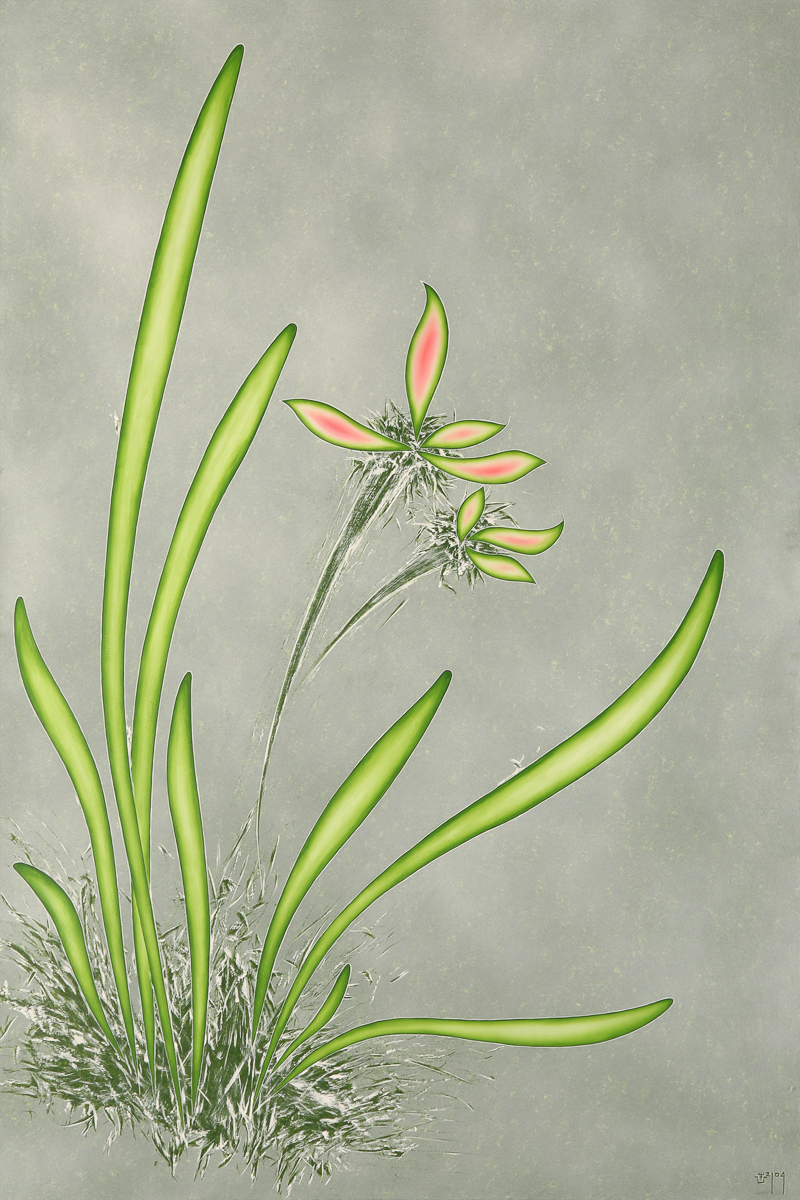
痕迹-兰花 150x225cm 亚麻布丙烯 2021 痕迹-来力 150x200cm 亚麻布丙烯 2021
痕迹-来力 150x200cm 亚麻布丙烯 2021
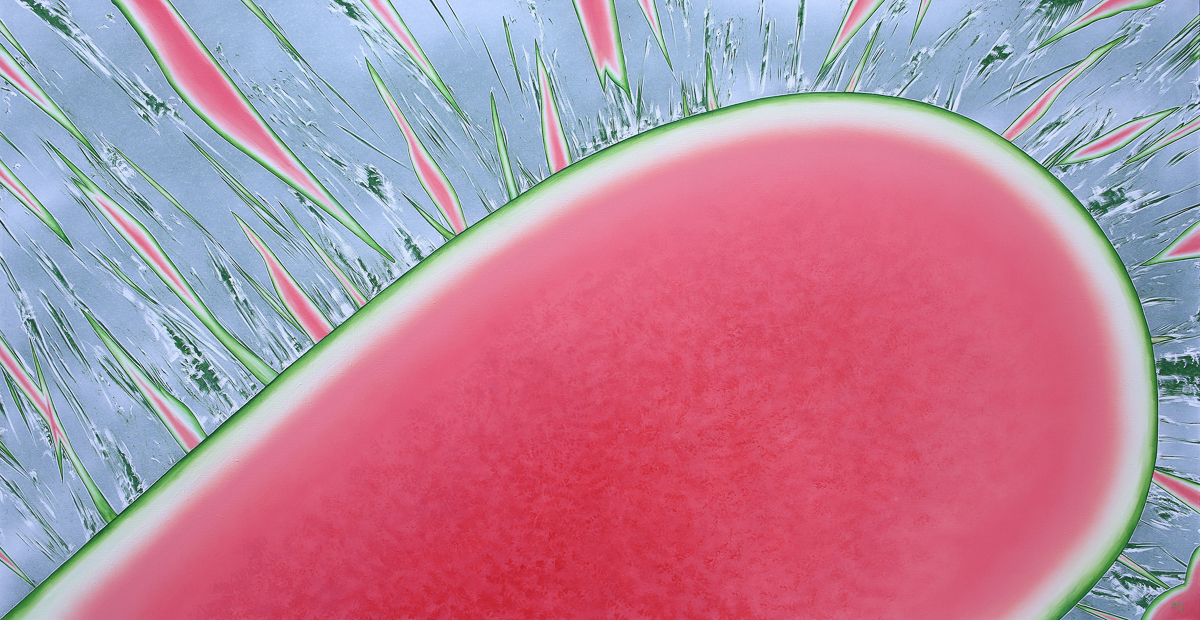
半颗赤子心155x300cm 亚麻布丙烯 2020

梨200211 亚麻布丙烯 100x200cm 2020
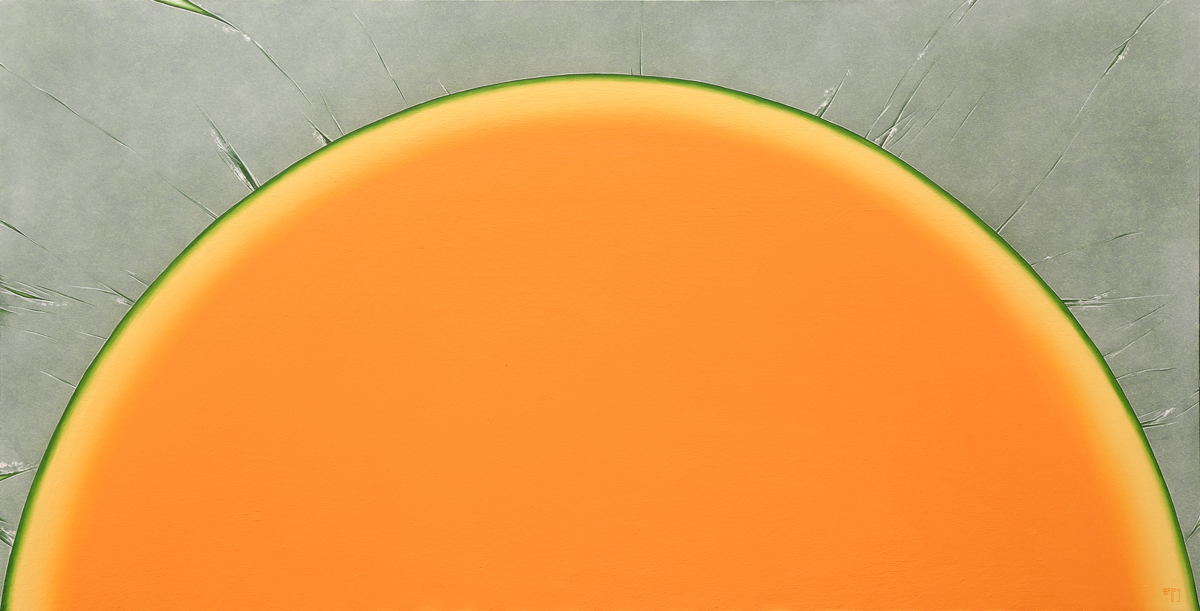
无题 120x240cm 布面丙烯 2020
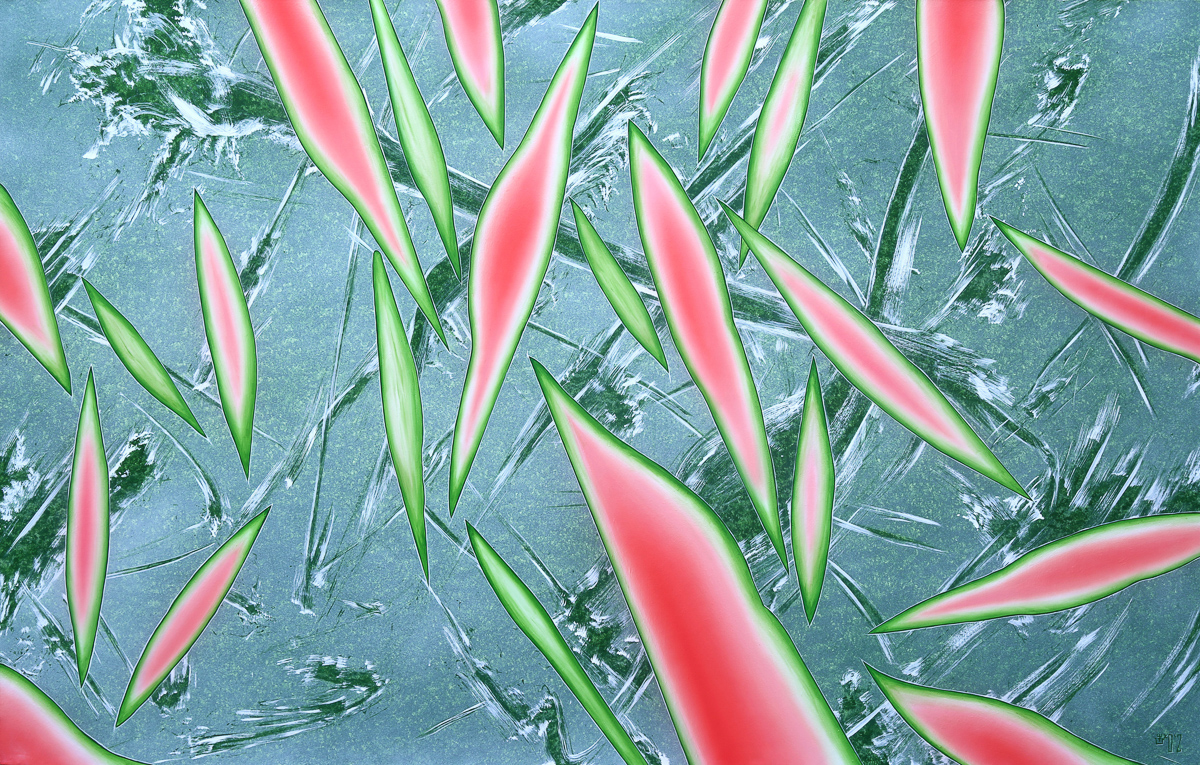
无题 145x226cm 亚麻布丙烯 2020
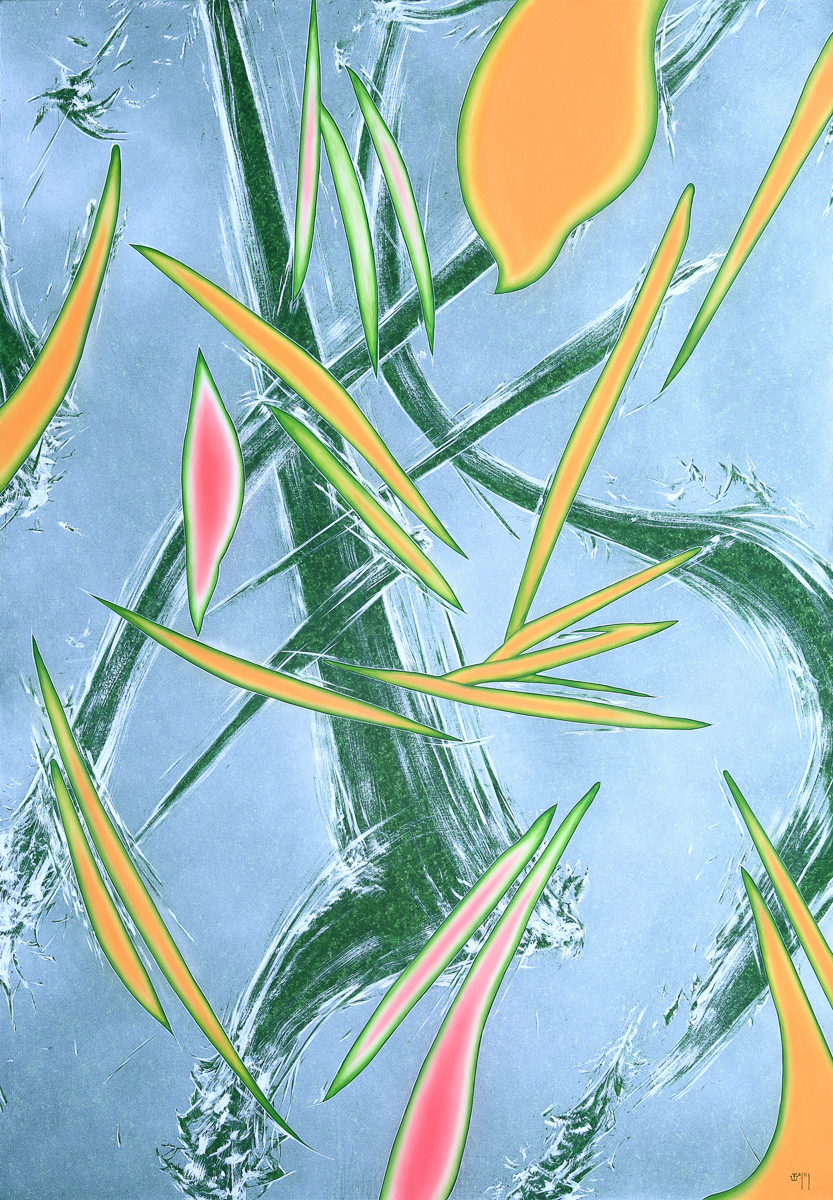
无题 150x216cm 亚麻布丙烯 2020

无题 187x300cm 2020 亚麻布丙烯
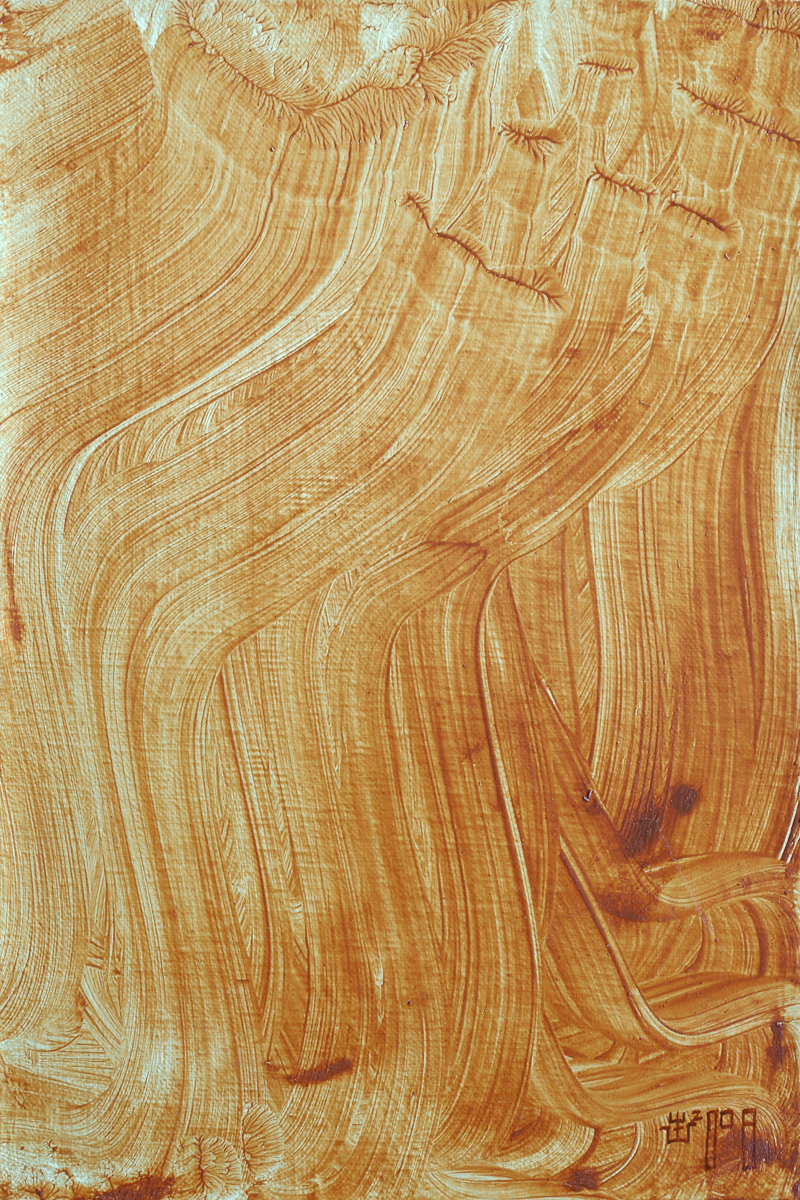
咸鸭蛋 200822 20×30cm 亚麻布丙烯 2020
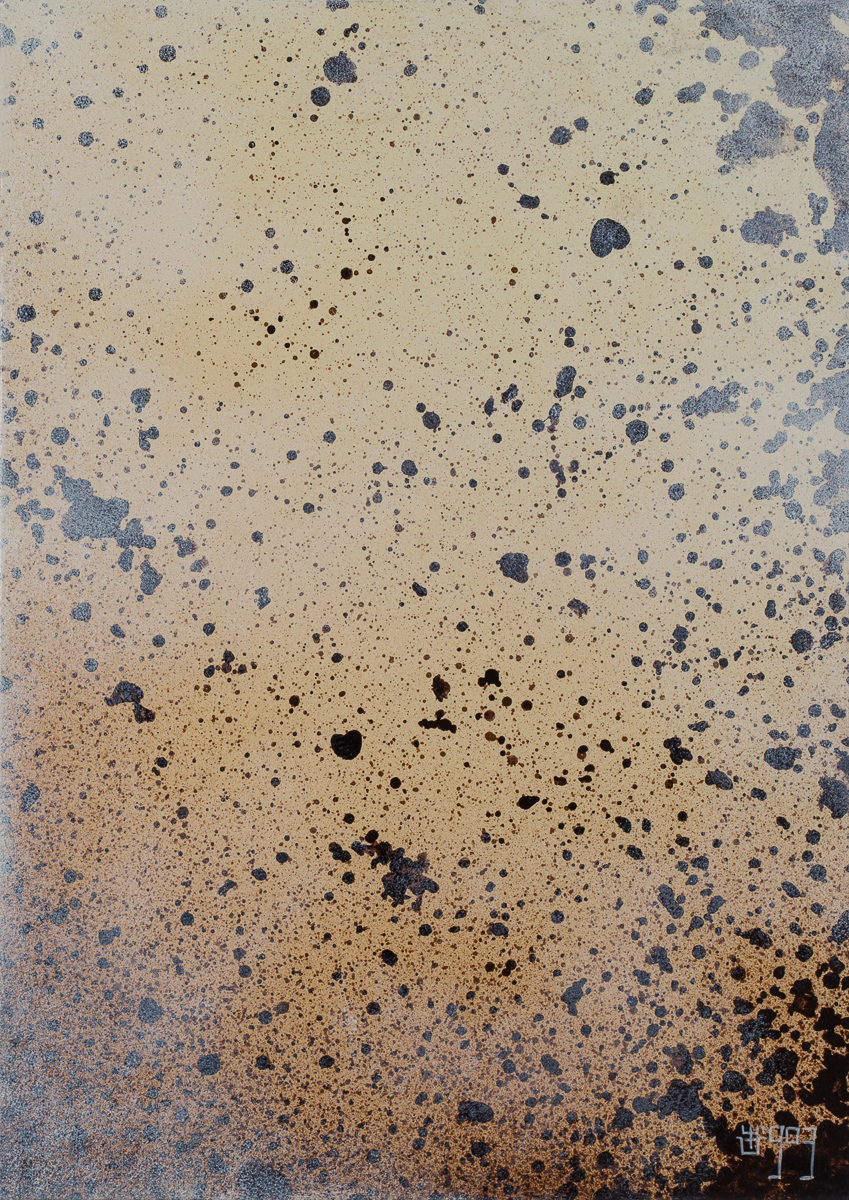
鹌鹑蛋1 25x35cm 布面丙烯 2019
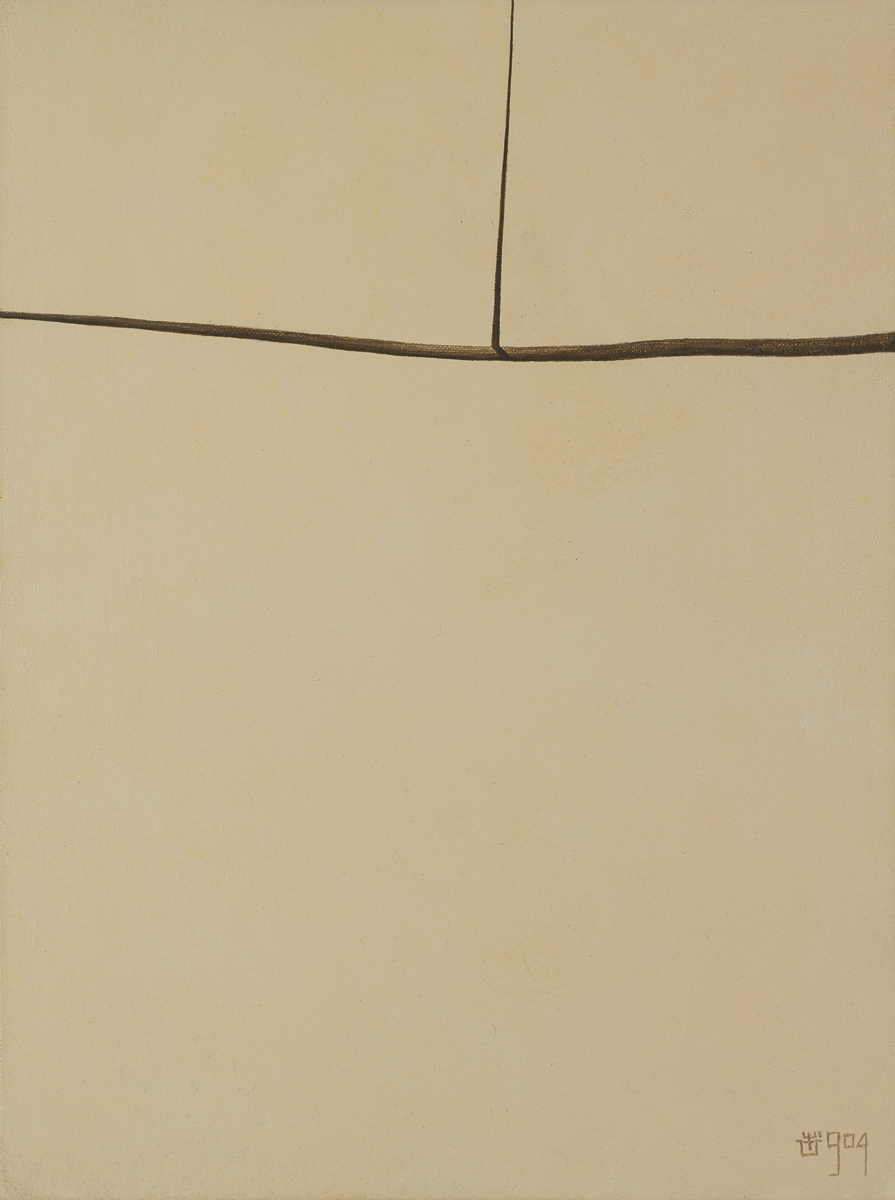
豆腐2 30x40cm 布面丙烯 2019

荤素十二条屏 35x100cmx12 布面丙烯 2019
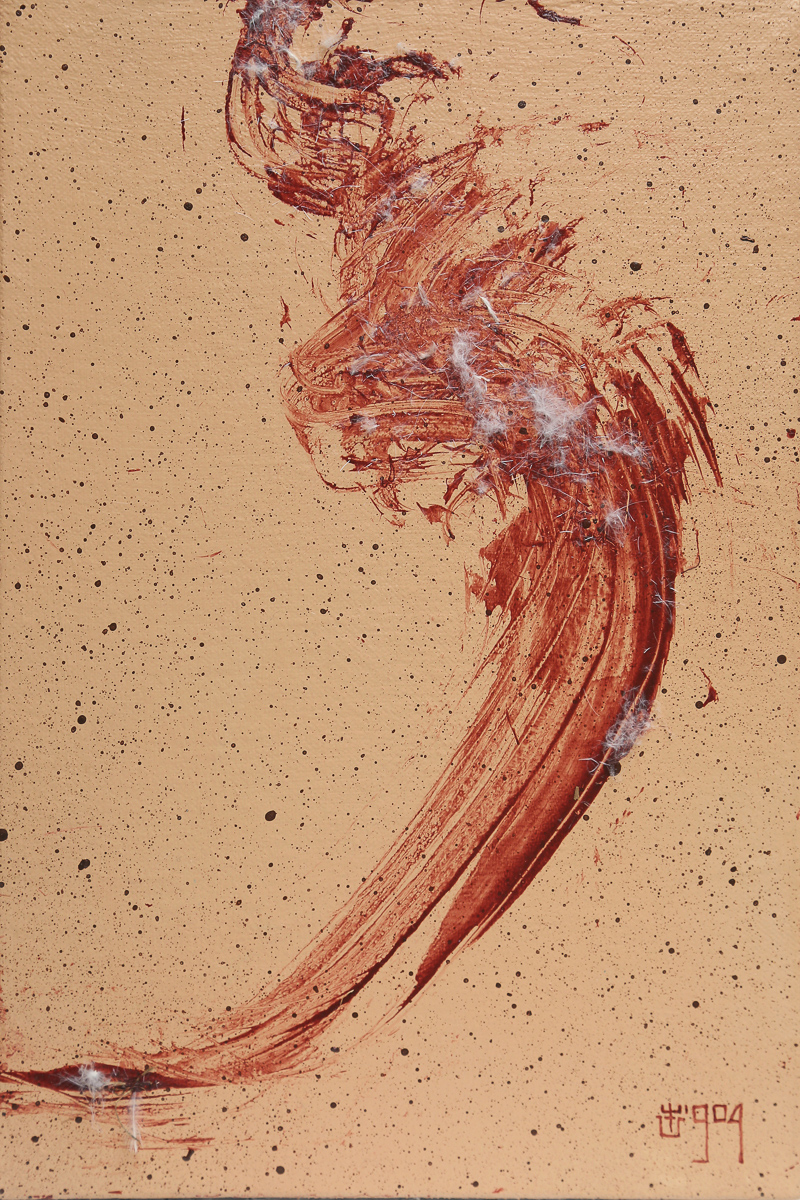
鸡蛋4 20x30cm 布面丙烯 2019
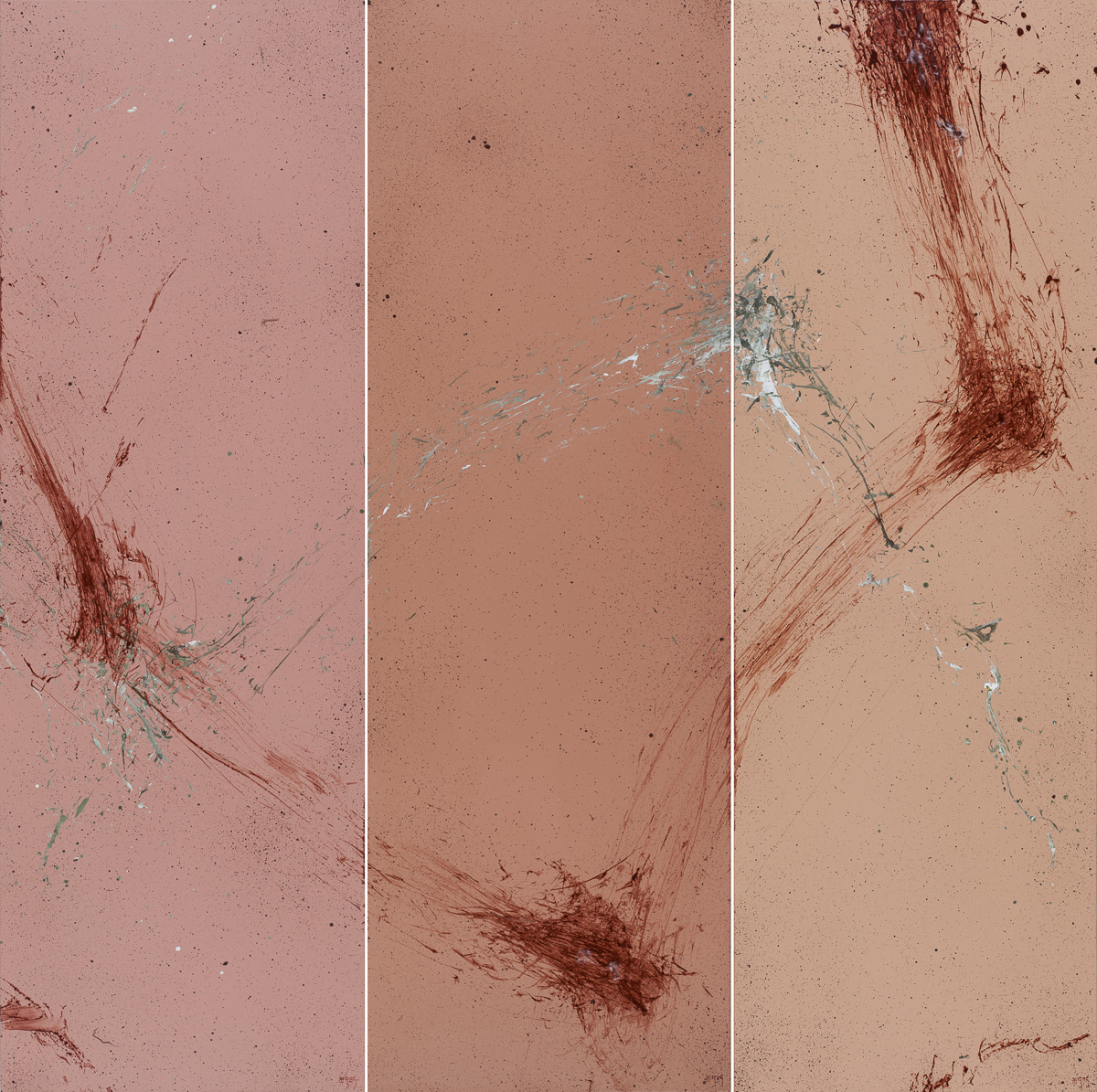
鸡蛋三条屏 50x150cmx3 布面丙烯 2019
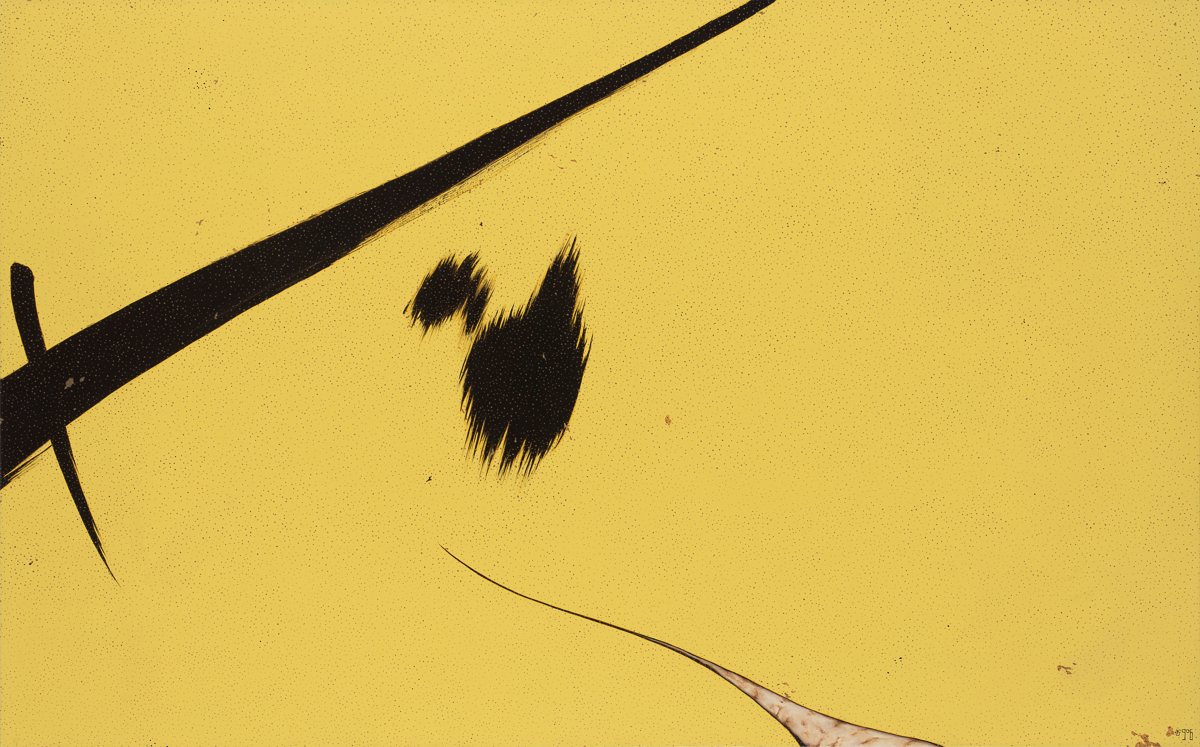
梨190620 100x160cm 布面丙烯 2019
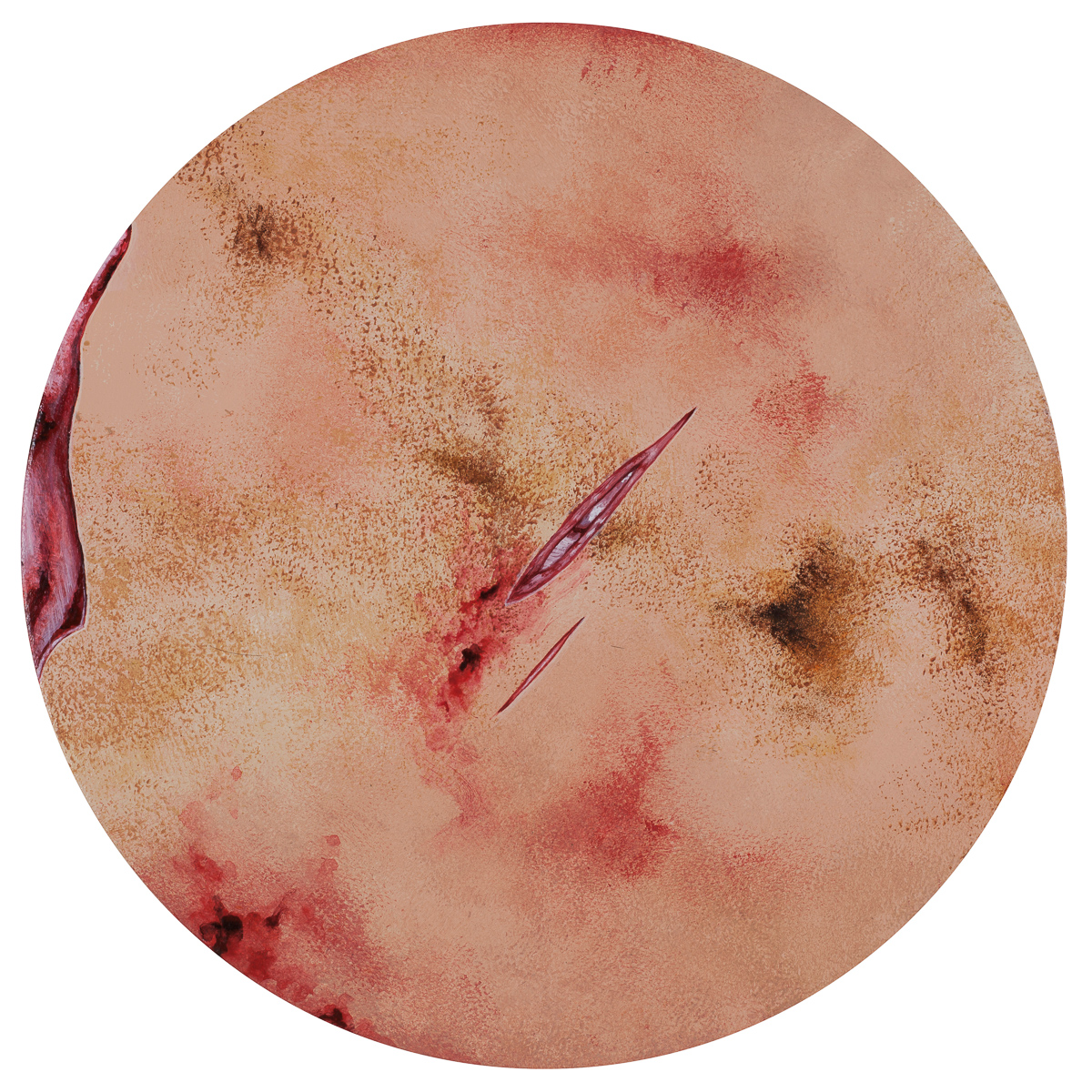
肉1 φ30cm 布面丙烯 2019

肉190623 60x80cm 布面丙烯 2019

松花蛋1 30x40cm 布面丙烯 2019

MAO 46x60cm 布面丙烯 2019
 Bruce Chang 张超级 (摄影by邸晋军)
Bruce Chang 张超级 (摄影by邸晋军)
张超级
1985年生于中国山东
现生活于北京 上海
个展
2014 下一片星空 南通 中南城
2015 寄居星球 上海 喜马拉雅证大美术馆
群展
2005 第一届宋庄艺术节 北京
2010 星星之火艺术家推荐展 杰森画廊 北京
2012 文化.沙漠当代艺术展 库布齐当代艺术馆 鄂尔多斯
2015 保利“艺起来”国际艺术博览会 保利国际会展中心 北京
2016 自然修复计划2016 ON画廊 北京
2020 约翰莫尔(中国)绘画奖 上海民生现代美术馆
Introduction of works
There is no culture, no story, no era, and no history in my work. It is only an exploration and dialectic of some objective laws in art that are not shifted by subjective will. The works at this stage focus on the three most basic problems in painting to explore and solve:
1.Every part of the painting is what you meant to paint.
2.Every part of the painting has denotation.
3.Every part of the painting is unquestionable.
1. Every part of the painting is what you meant to paint: When the painting of things have shape, can do every part of the painting is what you meant to paint .The answer is :No. when you are interested in something, you are not interested in the whole of it. Likewise, when you want to paint an object, you do not intend to paint all that you see. But the form of the object determines and presents the visualized whole of the object from a certain angle. Secondly, each and every bit of this object seen from this angle is defined and arranged in the position of common cognition. Thirdly, the form also forces out of the scene the other parts that cannot be viewed from this angle. However interested you might be in some of them, you cannot paint them. Due to the restriction of the form, you cannot make every piece of the canvas what you intend it to be. Take the front facing portrait for example. Its form determines that all the five sense organs, i.e. the nose, the eyes, the mouth etc., all that face front must be painted. It also determines that all the five sense organs must be painted in their designated places. It forces what is not included in it (e.g. the back) out of the scene. If you just want to paint a model’s eyes and her back, it cannot be done when the form is existent. In this situation, it is like the object’s outer form is giving you a blank-filling question, where all the content and positions of the answers (the five sense organs and the front parts of the portrait) have already been provided. All that you can do is to just fill these answers into the blanks beautifully. Whether you like the answers or not, you have to make them as perfect as can be. When the form is discarded, the question is also nullified. You can include only what you like in the painting, thus making every piece of the canvas speak what you intend it to.
2. Every part of the painting has denotation: When the painting of things have shape, can do every square millimeter of the painting has denotation. The answer is:No. there must be a “background” produced beyond the intended image itself, unless the form of the image matches exactly with the edges of the canvas. However, it is solely the image that the artist intends to depict. The “background” is nothing but a compelled byproduct. Being uncertain and unnecessary in itself, the background should not be deemed, in a strict sense, part of the painting. When the outer form is discarded, so is the background forced out of the scene. Hence, each part of the canvas is endowed with meaning, i.e. each and every bit of it is what the artist intends to paint.
3. Every part of the painting is unquestionable: when we see a painting, we would call in question the use of its colors, its composition, and its lines, etc. In other words, as long as it is human work, every part of it can be questioned, for any color, line or stroke in a painting is a result of human subjective consciousness. However, we can never question the spots distributed on an egg, or the scratches on an apple, because they are not results of human will. When non-subjective visual elements are integrated into a painting, the painting will become, to some extent, unquestionable.
Personal resume
Born in 1985 in Shandong, China .
Solo Exhibitions
2014 The next piece of sky is the Central and Southern city of Nantong, Jiangsu
2015 Alien planet Zhang Super - Wang Kuokuo double solo Exhibition, Shanghai Himalaya Zengda Art Museum
Group Exhibitions
2005 The first Songzhuang Art Festival Beijing
2010 Spark artists recommended exhibition Jason Gallery in Beijing
2011 China - Germany Stock Exchange Tour Deutsche Bank Beijing,
2015 Poly International Convention and Exhibition Center Poly International Art Exhibition Beijing
2016 Natural Restoration Plan 2016 ON Gallery Beijing
2020 John Moores (China) Painting Award, Shanghai Minsheng Modern Art Museum
来源:TAIMAY
